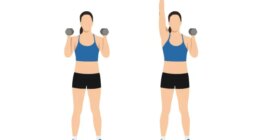I really want a quiet life. Everything feels overwhelming to this frazzled midlifer; my mind is a hot mess of “sandwich generation” stresses, work anxiety and impending planetary doom. I have tried to foster the calm I crave: we moved to a detached house in a quiet suburb; installed secondary glazing and thick curtains; I put my desk facing the garden. So why, when I enter what should be my haven from a noisy world, do I feel so wired? Where’s my peace and tranquillity?
Well, let’s take a look at what greets me when I arrive home, as seen through the eyes of Rachel Cordingley, from home organisation and decluttering company, A Tidy Mind: “Paper, paper, shoes, shoes, shoes… chicken postcards… WD40. Is this a table?”
Cordingley is scanning the area around my back door. On the table a pile of unopened envelopes is precariously pinned under a mug and the dog’s lead. Against the wall is a stack of floorboards; there’s shoe polish under the printer and a Christmas decoration on the shelf. This isn’t a room, it’s a to-do list – and it’s screaming at me the minute I put my key in the lock. Everywhere else is similarly noisy. There’s just so much stuff – gifted, bought, or seemingly snuck in by osmosis. Even my bedside table is a jumble of snake oils promising sleep or dewy skin, books, bed socks, tchotchkes and loose mystery pills. It’s no wonder I sleep horribly with all that chattering next to my head.
My home needs “hushing”, an interiors idea that is making some noise at the moment. It’s all about eliminating visual “noise”: anything excessive, jarring, or inharmonious. “Everything in your room has a voice… taking up visual, physical and even emotional space,” according to interiors blogger Myquillin Smith of The Nester. “Quieting your space removes all those voices in a room at once.” According to the hushed-living concept, stuff you accumulate, the flotsam of daily life, but also things you have chosen – ornaments, pictures and decorative bits and pieces – create a hum. You probably aren’t even aware of it – a phenomenon often described, in a perhaps unhelpful mixing of metaphors, as “house blindness”. But the cumulative effect can be a jittery blast, like avant garde free jazz. Fewer possessions, carefully and deliberately selected, can transform cacophony into pure harmony.

Eliminating domestic noise feels timely: our rackety, alarming world is driving a desire for quieter spaces and designers are on board. “There is chaos in the world,” says Sally Denning, author of Calm: Interiors to Nurture, Relax and Restore. “There’s never been a more important time to try and create a space where you feel at peace.”
It’s a sentiment echoed by Sarah Andrews, interiors guru and author of The Poetry of Spaces, a paean to peaceful, considered living. She describes herself as “very sensory- sensitive. I live far away from people in a giant quiet house,” she tells me from her home in California. For her, the hushed-house concept is a way of life. “I have to live like that full-time.”
Tash Bradley, director of interior design at paint company Lick, has just hushed her own living space and describes the process as “understanding what items you really love, that have a purpose and that you actually need”. It works, she says. “We’ve felt joy and calm and the home feels way more peaceful. I think it’s down to knowing where everything is and that it has its place. But also, all the crap you don’t need has been cleared out and it gives everything else room to breathe and you have more joy with the items you do have.”
There’s some support for hushing as a way to a calmer life in research on the cognitive impact of visual noise. Studies have found a highly decorated environment can affect children’s ability to focus and concentrate; for adults, constant visual reminders of our disorganisation can sap our mental resources. Those who feel overwhelmed by their environments are also more likely to procrastinate.
I desperately need focus myself and that post pile is a clear sign I’ve become a master procrastinator. Could hushing my home really help? Cordingley believes so. Her work has shown her repeatedly how closely our living environments and our emotional state are linked. A significant portion of her clientele is neurodiverse and thrive in calmer spaces, though what works from client to client varies. Someone with a brain injury might need everything on open shelves; autistic clients, she says, tend to like order. “It’s all cleared and it feels like there’s space.” Her philosophy combines aesthetics and function in a way that is very hushed. “Everything has its own home; it looks beautiful, but it also works.”
We discuss the suggested hushing method (you can find instructions on the Nester’s Instagram or check out TikTok minimalist @downsizeupgrade’s videos). In essence, you take everything out of a space, wait a beat (24 hours ideally), then make considered decisions on what you want there. For Cordingley, it’s an opportunity to realise less really is more. “We need a roof over our head, food and water, things to clean with, clothes to wear, a bed to lie on… That’s it. Then you go in a box and that’s the end of your life and you leave with what you arrived with.”

I’m concerned I can’t commit to hardcore minimalism: I love trinkets and treasures. My office in particular is haphazardly covered in photos and postcards and one shelf has become a mini cabinet of curiosities: eggshells, a shark’s tooth and feathers. Does a hushed space have to be an empty one? “The harmony between things can be quite hushed, even if you have a lot of things,” says Andrews, who draws on her past life as a spatial scientist to analyse living environments. Her elderly neighbours, she says, have a home with “thousands of things”, but it manages not to feel noisy. “It can feel quite calm if all the colours work together.”
Andrews recommends using an “eyelash test”: half close your eyes to see what leaps out and jars – it is the visual equivalent of nails on a blackboard. She also believes different rooms suit different levels of fullness. She likes a fuller bedroom – “If a room is more than half full, it has a feel of being cosy and interesting” – but prefers working and living spaces to be more monastic. “I have room for new ideas to come in and other people to be there.”
Thankfully, there are ways to quiet your space other than decluttering. Tackling actual noise is one. I’m acutely noise sensitive; it obsesses me and I’m not alone. One in six Britons has moved house for noise reasons, according to 2018 research (admittedly by double glazing firm Everest). British homes aren’t great at hush. “Our standards are still too low, in my opinion,” says Professor Trevor Cox, head of acoustics research at Salford University. “It’s a really serious issue that is often overlooked.” Cox highlights some common problems: laminate flooring replacing carpet, meaning you hear footfall from above; and common joists between neighbouring houses that allow sound to travel.
There are fixes. “We always say ‘treat at source’ with noise,” says Cox. “Put carpet down or make sure your laminate floor has underlay that absorbs sound. That makes a huge difference.” Moving a TV off a party wall will stop direct vibration and cut noise leakage. “But all that requires negotiation with your neighbours.” The next step up is “beefing up your walls”. Adding plasterboard with a “resilient layer” (rubbery material) makes walls heavier and better able to resist sound.
Consult the free database Quiet Mark before you buy a new appliance – there are almost 100 product categories, from tumble dryers to breast pumps. Quiet Mark tests appliances for decibel and sound quality levels and conducts jury tests; only 10-25% of products in each category are certified quietest and, crucially, least irritating.
For Quiet Mark’s Poppy Szkiler, hushing is in her heritage. Her grandfather, John Connell, founded the Noise Abatement Society. She’s seen a sea change in our level of concern about noise, particularly in the WFH era. “Our product certification tripled during lockdown, because of everyone going ‘I can’t work with this going on!’ Noise issues create an emotional reaction in us; it’s so deep the way sound affects us.” She recommends conducting a sound audit to identify your top 10 hush busters, from a noisy spin cycle to roaring bathroom ventilation, then tackling them, one at a time.
READ RELATED: Fire Island’s 2023 LezVolley Tournament Is a Perfect Summer Mood (PHOTOS)
Other sensory fixes can turn down the domestic volume, too. “Colours can stimulate and excite, but they can also make us feel at peace,” says Denning. To achieve that calm with colour, Bradley advocates warm (red and yellow-based) neutrals: “Anything with a lovely soft warmth to it,” she says. For anyone wary of a greige-out, she’s a fan of pink. “Dusty pinks instantly relax you – your shoulders drop, you create that cosy but calm environment that’s perfect for anyone who wants that hushed vibe.” Green is another great option. “It’s the colour that connects you to nature,” she says – a connection that brings feelings of calmness and joy, greater powers of concentration and lower levels of anxiety, according to the Mental Health Foundation. Bradley singles out “earthy, timeless, grounding sage” to make that connection with a garden, window box or trees beyond. “Anything that can bring the outside into our homes is a no-brainer.”
Sticking to one palette also turns the spatial volume down, says Denning. “Ensure the décor works as a whole, creating a smooth visual pathway from one room to the next rather than jumping from room to room in a mismatched chaotic manner.”
Shape and texture matter, too. “Touch is key,” says Denning. “A hug from a friend can instantly bring peace and serenity, and filling your home with inviting textures will have the same effect.” Natural elements – stone, wood, lime paint – give spaces an organic, multilayered feel and “an instant connection to the outdoors”. Even changing fabric can help; Denning likes “loose-woven washed linen, sheepskin, wool, velvet, chunky cord and bobbly bouclé. Pile up and layer with blankets, throws and cushions for an instant mood of relaxation.”
With her spatial scientist’s eye, Andrews recommends offsetting hard corners and countertops with softer, rounded shapes. “Our houses can have so many straight lines and corners: to a human, it’s like sharp elbows, because we’re soft, natural creatures. I find in a room with lots of rounds, humans feel very comfortable.”
Armed with these ideas, I start hushing the rowdy back door dumping ground with the stern zeal of a comic book librarian. We drag (almost) everything out, implement Cordingley’s suggested “shoe cull” and consider what actually belongs. The verdict? Shoes, yes, but far fewer, keys, dog stuff and the post, neatly wrangled. We relocate and recycle, bring in a rug, add a key bowl and a beautiful box file for paperwork to the now clear table. I send Cordingley a progress picture, proudly, and she’s encouraging (she offers some brilliant storage suggestions) but gently challenging. “It still looks very busy, with drawers on top of drawers,” she notes of my stacked filing cabinets. “Especially since they are different colours – not so hushed.” I redouble my efforts until the unopened post overwhelms me. I whittle it down, but there are three residual piles I can’t look at without feeling queasy.
Cordingley recommends tackling a “quick win” when you’re stuck, so I leave the shouty hall and try one of interior designer Natalie Walton’s hushing recommendations on my bedside table. “Consider what you see when you first wake,” she advises. “Is it a stack of books on your bedside table and a pile of clothes on a nearby chair? Or is it something you’ve added with intention to create a moment of calm first thing in the morning?”
It’s the first one (no surprises there), so I take everything – snake oils, Mother’s Day gifts, notebooks, novels, my childhood soft toy Piglet and much more – out of the room. What actually belongs feels simple: Kindle, two books, earplugs hidden in a pretty cup and a tiny hare figurine I love. The rest can go; I shock myself by putting Piglet in the bin.
That night, lying next to the still, small space I’ve created, it feels as if a breathing space has opened up in my brain, too. There is less clamour. People often talk about listening to the silence; now I think I stand a chance of tuning in to it.
Will I keep hushing? I hope so. It does take energy and resolve – stuff has an emotional charge as well as visual hum – but I’ll try. The “quiet” back door area is already starting to mutter – a motorcycle helmet, a screwdriver and some trousers have since materialised on the table. The difference, post house-hushing, is that I know what belongs where, and that makes tackling the sources of noise feel less overwhelming. I don’t really believe you can silence noise altogether, whether the source is internal or external. I’m not even sure I want to. As Cordingley says, “Just when you get everything straight, life happens.” But maybe with a quieter home, that “life happening” business won’t leave me screaming.
The sound of silence: Six ways to help create a quieter home
1. Texture Bring serenity into living spaces with different textures. Sheepskin, raffia, wool, velvet, chunky cord and bouclé bring feelings of warmth and security. Natural elements, such as stone and wood, connect to the outdoors.
2. Colour Warm neutrals will bring feelings of peace. A single palette throughout the home induces calm and fluidity. Connect to nature with shades of green – it reduces anxiety and increases a sense of tranquillity.
3. Shape Offset hard corners, surfaces and angular furniture with softer, rounded shapes.
4. Hush busters Kitchen appliances are a rowdy bunch. Use Quiet Mark’s free database of domestic products certified by the Noise Abatement Society to select the least noisy among them.
5. Space Give every object a home and recycle objects that you no longer need or never use.
6. Floors Add underlay beneath wooden flooring and rugs on top of it. If you are renovating, use the opportunity to plasterboard your walls to make them more sound-resistant.
Model Nicole B at Industry Model Management; stylist Thom Robinson; dress by Mango; hair and makeup by Laura Tallentire using GHD, Plouise, Bobby Brown and Essie; retouching by Barry Craig; photo assistant Matt Reay




